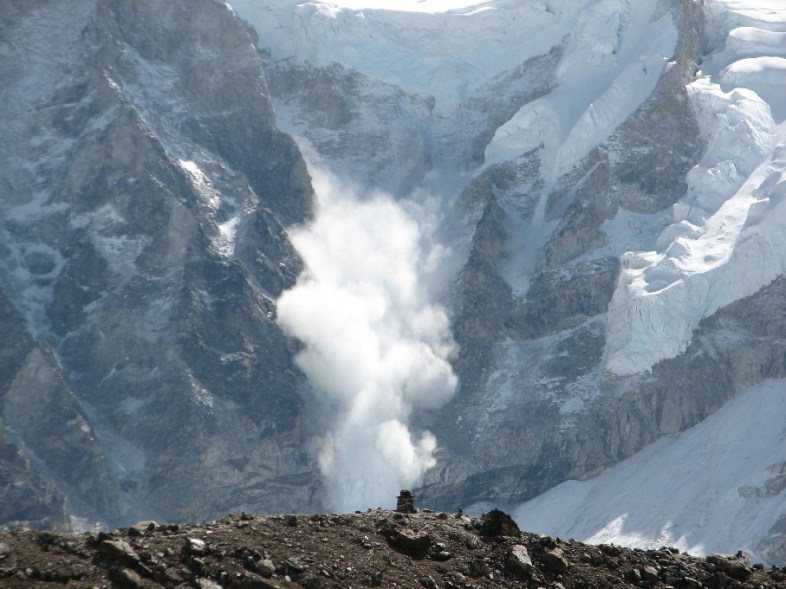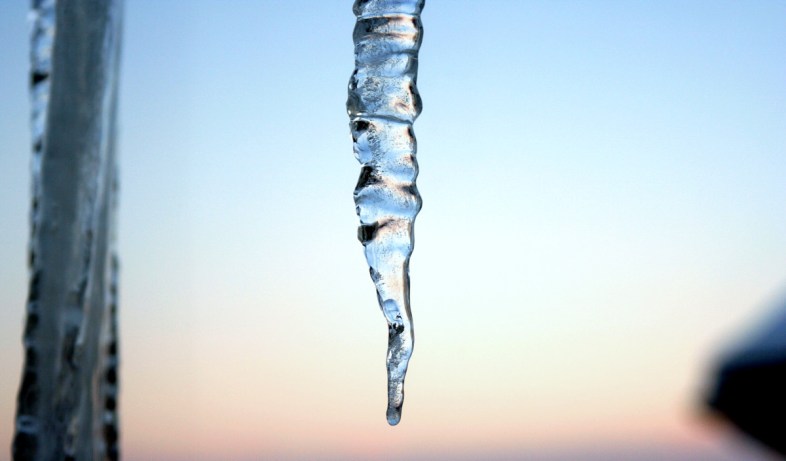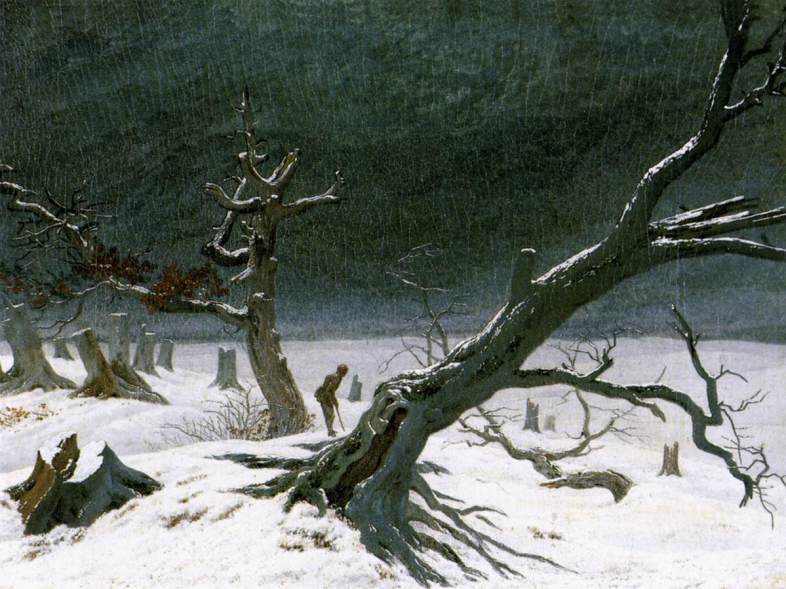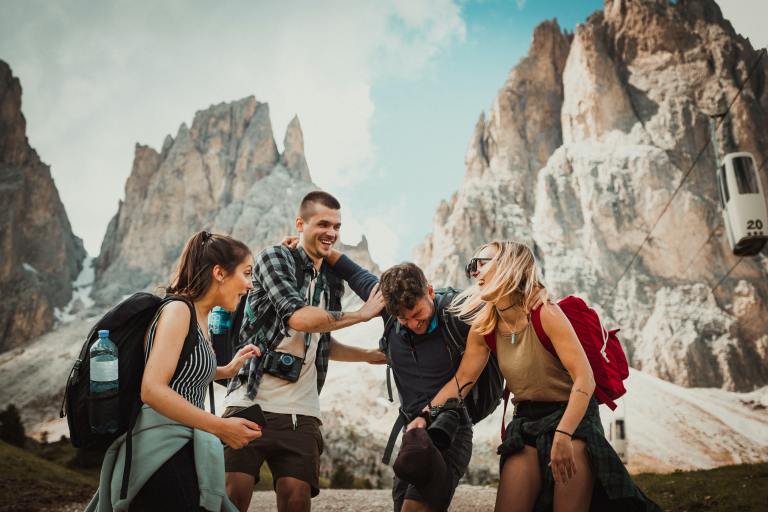Death By Snow: 14 Ways That Winter Weather Can Kill You
Freezing to death is only the tip of the iceberg.
The first day of winter is creeping up like the Grim Reaper. Due to that cruel season’s merciless dearth of sunlight and warmth, I curse every dark and barren day until the first blossom appears sometime late in March. For me winter is an annual ritual of emotional hibernation and grim resignation.
But though I suffer an emotional death every winter, many people suffer literal death due to the meteorological calamities caused by our hemisphere’s yearly phase of brattily turning away from the sun and staring into deep dark frozen space. Freezing temperatures and ice and snow can literally kill you. Here are fourteen ways that Old Man Winter can render you a frozen stiff.
![]()
1. AVALANCHES

Having your ribcage and skull crushed into a bloody snow cone by a downhill frozen tsunami has to be one of the most terrifying ways to die, especially those last few seconds as you see the giant wall of snow careening downward to bury you.
The deadliest avalanche in history happened in Peru in 1970. After an offshore earthquake, a massive slab of glacial ice was dislodged from the top of Mount Huascarán. As it hurtled down the mountain for nearly 11 miles, gaining snow and mud and rock with it at speeds estimated at anywhere from 100 to 600MPH, it built into a fearsome, life-snuffing chunk of death that killed an estimated 20,000 people in and around the mountain town of Yungay. Only 92 people survived.
In February 1910, the deadliest avalanche in American history occurred in Washington State. Ninety-six people perished under the frozen weight of what became known as the “Wellington Disaster.” A survivor named Charles Andrews describes what he saw:
White Death moving down the mountainside above the trains. Relentlessly it advanced, exploding, roaring, rumbling, grinding, snapping – a crescendo of sound that might have been the crashing of ten thousand freight trains. It descended to the ledge where the side tracks lay, picked up cars and equipment as though they were so many snow-draped toys, and swallowing them up, disappeared like a white, broad monster into the ravine below.
![]()
2. SNOWBALL FIGHTS
Few pleasures in life are as innocently joyous as a snowball fight among friends as special snowflakes fall silently on a crisp winter’s night.
What can really ruin the mood, though, is when a snowball fight turns to murder.
In Turkey in 2015, a journalist was stabbed to death by a storekeeper who became enraged when an errant snowball hit his store window. According to friends, the journalist’s last words were, “Please let this be a dream!”
In Buffalo, NY in 1998, a snowball fight between two 13-year-old boys one day led to a brutal fistfight the next day that ended in one boy dying from a brain hemorrhage.
In Philadelphia ten years before that, a snowball thrown at a passing car led to a 17-year-old boy’s fatal stabbing.
Perhaps the most tragic case of death-by-snowball didn’t involve a fight at all—it was 1973 when a group of teens in Spokane, WA, pelted a 56-year-old handicapped man with snowballs. He fell and died of a heart attack while scuttling over snow with his cane trying to escape their onslaught.
![]()
3. A GIANT MANMADE BALL HURTLING DOWN A MOUNTAINSIDE
If you think it sounds insane to strap yourself inside a giant transparent ball and have someone roll you down a mountainside, so do I. In Russia, these inflatable death traps are known as “zorbs.” In 2013, two men strapped inside a zorb went rolling down a track on a mountain in the North Caucasus, only to hit a bump, roll off the designated track, and plummet rapidly down the mountainside. One man died; the other describes “flying in freefall” and seeing the raw “fear” in his friend’s eyes before “everything went black.”
![]()
4. A 500-POUND ROLLING SNOWBALL
In February of 2005, a 10-year-old Scottish boy was crushed to death by a quarter-ton snowball that slammed into him while rolling down a hill. “It just shows how an apparently harmless, innocent, fun-filled activity can end in tragedy,” said a government spokesman.
![]()
5. AN ICE-SKATING BEAR
A five-year-old ice-skating bear trained to perform in a Russian state circus company attacked two circus hands in 2009, viciously mauling one and killing the other by dragging him across the ice by his neck.
![]()
6. SKIING AND SNOWBOARDING

An estimated 50 skiing and snowboarding-related deaths occur annually in the USA. Easily the most infamous and tear-jerking skiing death in world history was that of the multitalented and unfathomably handsome Sonny Bono, who mentored Cher into superstardom before she unceremoniously dumped his ass. Bono was skiing near Lake Tahoe in January 1998 when he slammed straight into a tree and died from injuries caused by the impact.
There are dozens of snowboard-related deaths chronicled here and here. The latter link describes the tragic case in December 2010 where a 23-year-old male snowboarder in Wyoming crashed into a five-year-old girl and they both died.
![]()
7. FALLING ICE

The first known case of death-by-icicle happened in England in 1776 when a giant icicle fell and fatally fractured a boy’s skull. His epitaph reads in part:
Here he lies
In a Sad Pickle
Kill’d by an Icicle.
A Michigan police officer was decapitated in 1903 when a giant icicle fell on him. In 1994, a man in Chicago was killed after a giant ice chunk described as “microwave-size” fell off a Neiman Marcus building onto his head. (source)
![]()
8. FALLING THROUGH ICE
Every winter in America’s frozen zones brings another story like the ones of a six-year-old boy who died after falling through lake ice and being trapped alive under ice for a half-hour, a mother and son who both fell through ice and died after the mother attempted to save her son, and a woman and her dog who both died after the woman tried saving her dog. If you aren’t sure that a lake or pond is frozen enough so that the ice can withstand the weight of an elephant, it’s wisest to stay on terra firma.
![]()
9. SNOWMOBILES
While marketed as glorified Santa sleighs, snowmobiles are fearsome death machines that rampage over ice and snow with the unforgiving force of an electric buffalo, killing around 200 North Americans every year. The most high-profile snowmobile death was that of Caleb Moore during the 2013 Winter X Games in Colorado. While Moore was attempting a back flip, his snowmobile’s skis got caught on the ground. He flipped over, then the snowmobile flipped right onto him. He died of heart-related problems en route to the hospital.
![]()
10. SKI BASE JUMPING
Since I’m afflicted with a morbid fear of heights that only worsens with each passing year, I feel that BASE jumping of any kind is insane and borderline suicidal. In 2009 amidst the Dolomite Mountains of northern Italy, pro skier Shane McConkey—described as “the Michael Jordan of skiing”—ski-jumped off a 2,000-foot cliff while cameras were filming. To make a safe landing while BASE jumping on skis, one is supposed to discard both skis while in mid-air. One of McConkey’s skis failed to come off, which had him spiraling out of control and made him unable to deploy his parachute.
![]()
11. LUGES
During test runs for the 2010 Winter Olympics in Canada, Nodar Kumaritashvili of the nation of Georgia rounded a turn at 89MPH and went flying off the track to his death.
![]()
12. TOBOGGANS
Whether it’s a British or Australian man running into a tree, an eleven-year-old boy accidentally smacking his head on a post next to the track, an eleven-year-old boy dying of catastrophic brain damage at an Austrian ski resort, or an English girl smashing into a barbed-wire fence at 50MPH, the message is clear—toboggans can kill you.
![]()
13. FREEZING TO DEATH

According to the National Center for Health Statistics, freezing winter temperatures kill twice as many people in America as sweltering summer heat waves—nearly 1,300 people die yearly due to cold-weather exposure. That’s about triple the number of Americans that have died this year from mass shootings. This gruesome tally will hopefully abate once global warming finally kicks into full gear.
![]()
14. ICY ROADS
Icy roads—particularly “black ice,” which is actually thin and transparent and therefore appears almost invisible on black asphalt—lead to around 467 highway fatalities in America annually. ![]()


